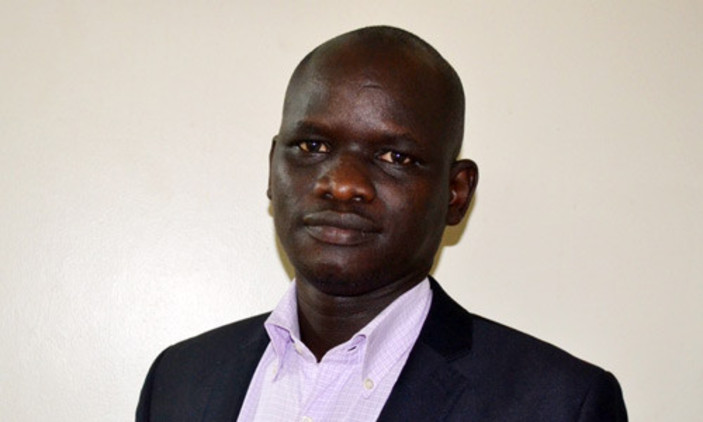By Tonny Odokonyero
For any country to accelerate Universal Health Coverage (UHC), policy efforts must tackle three key dimensions. First is “who is covered” in terms of healthcare – which is about coverage of the population. Second is “what is covered” – which relates to the package of healthcare or benefits. Third is “how much of the cost is covered” – this addresses the issue of financial risk protection.
Besides political will and good governance, addressing all the three UHC dimensions require concerted efforts to adequately invest in necessary inputs and resource distribution in an efficient, equitable, and sustainable manner to match the healthcare need of the populace. Among the necessary inputs, Human Resources for Health (HRH) is of central importance.
This article pays particular attention to HRH (health workforce), as it is a critical input needed for healthcare service delivery for realizing universal coverage. Indeed HRH is a health system ingredient that is paramount to the country’s response to challenges related to figuring out how best progress towards UHC has to be accelerated.
It is only through the health workforce that the health system expected to yield UHC is designed and managed, in order to deliver the healthcare services needed for accelerating UHC. Without a corresponding investment or serious attention paid to governance and management of HRH including its stock, relevance, distribution, skill mix, quality and productivity; the goal of accelerating UHC progress will be unattainable. Admittedly, the cornerstone for making any UHC progress is supply of proficient and motivated HRH that match the population’s need for healthcare.
In Uganda however, the daunting task that remains is building and motivating this “cornerstone”. Health sector staffing is below optimal level. The country still has a huge job ahead, to build this cornerstone, due to glaring gaps in HRH. Given the country’s “big dream” of attaining UHC, it is now that the government must deal with the problems of HRH head-on. It is the time to start looking at HRH as an investment rather than viewing it purely as liabilities that the government has to periodically spend on.
Because the health workforce is not deemed as an investment, the conspicuous healthcare (medical) staffing gaps that still exist is to the tune of about 40 to 50 percent (particularly district level staffing) depending on the region, benchmarked against staffing norms set by the health ministry. This indicates a critical shortage of health workers, to the extent that only about half of the health workers (such as midwives, nurses, and medical doctors) required to attend to the healthcare need of the population are available in the country, out of the total number that is required, which ultimately translates to too few health workers who are overburdened and suffering from occupational burnout. It is a country-wide problem, but more striking in rural and/or hard-to-reach areas.
Also, considering health facility tiers, inequities in health workforce distribution is large, with lower level facilities such as Health Centers (III and II) experiencing the widest staffing gaps, and yet these are the facilities that serve most rural, poor and vulnerable people. With all these, the population can hardly receive the minimum healthcare package required to meet their healthcare need, which presents a substantial challenge for delivering UHC.
However, looking at this gap at face value when contemplating solutions may be misleading – it is not enough for generating a concrete solution to the problem. For example, one may think that just recruiting more health workers to fill existing vacant positions is adequate solution. But it is not the case – recruiting more health workers, as it is currently being championed by the health service commission, is just a necessary but not sufficient action.
Exploring the hurdle from another angle, the health workforce density is very low nationally and across regions. It is below the standard that can catalyze attainment of UHC. This indicator (density) accounts for the country’s population when analyzing HRH requirements, and somewhat reflects the extent to which the entire population is covered in terms of the health workforce.
The World Health Organization (WHO) recommends a density of about 2.28 health workers per 1,000 people in order to make good progress towards UHC, implying that about 23 health workers should be made available at all times to serve 10,000 people. However, Uganda’s density is low to the extent that less than 10 health workers exist to serve 10,000 people, even before accounting for common challenges such as absenteeism and demotivation.
The country still does not meet the required density even when the private sector is considered. Furthermore and most importantly, a critical diagnostic of the problem shows that even if the staffing norm set by the Ministry of Health is met (i.e. 100% staffing as per set norms), the health workforce density will still fall short of the density required to accelerate UHC progress – i.e. at less than half of the recommended standard.
Consequently, even when all the current medical staffing gaps are filled through recruitment to match the set staffing norms, the total health workforce will still not be in a position to provide full healthcare coverage to the population, hence a higher likelihood of failure to expand population-based healthcare services, which poses a major threat to UHC.
This situation suggests that the existing medical staffing norms set by the ministry is much lower than what the country actually needs. The plausible flaw with the set norm is that inter alia, factors such as; healthcare demand and/or population, health workload and changes in healthcare services might have not been adequately accounted for, thereby requiring a great deal of careful consideration.
Besides other interventions prescribed in the HRH strategic plan such as; continuous capacity building for HRH training & development to boost supply of adequate skilled health workers, resource mobilization for HRH, establishing functional incentive mechanisms to enhance health workforce motivation and retention; it is crucial that staffing (medical) norms set by the health ministry are periodically reviewed.
This can be scheduled in annual, medium or long term reviews of the HRH plan, and the medical staffing norm revisions must adequately reflect periodic changes in the population and demand for healthcare services (including workload-based staffing), and alignment to the standard or threshold staffing density required to deliver Universal Health Coverage.
Tonny Odokonyero is a Researcher at the Economic Policy Research Centre – SPEED for Universal Health Coverage






